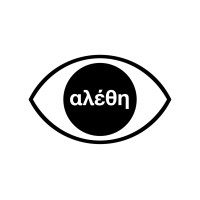Psycholinguistics is the study of connecting psychological aspects with language and speech, sometimes referred to as the psychology of language.
In more depth and biological terms, psycholinguistics is the ability of an individual to use and understand language and its relation to the neurological system.
With more research happening in the field of cognitive science, biology, and neuroscience, we have a better understanding of how language is processed in our brains. Psycholinguistics covers a wide range of factors of speech and language. It talks about the technicalities like how a grammatically meaningful sentence is generated by the brain and how we understand utterance or text presented to us.
Psycholinguistics is studied in various fields and disciplines. Using a different approach but the same focal point. Linguistics, sociology, and psychology, have different approaches to psycholinguistics.
The Subcategories of Psycholinguistics
The subcategories of psycholinguistics include:
Clinical Linguistics
Focuses on identifying, analyzing, and treating language disorders. This talks about communication disabilities and other situations.
Developmental Psycholinguistics
Highlights the study of children and adult learners. How they acquire natural language from a psychological perspective.
Second Language acquisition
Expresses the learning of a second language. This is the process of learning a language after learning your first language during the growing stage and early socialization.
Neurolinguistics
Refers to how the brain perceives language or how language is presented in the brain. The processing of language in the brain and how it is stored.
These categories further help in different areas of psycholinguistics. These are used to conduct research, treat disabilities or prepare theories.
History of Psycholinguistics
The term psycholinguistics gained popularity when a prominent psychologist, Jacob Kantor used the term in his book “An Objective Psychology of Language”. even though the theoretical framework of psycholinguistics was developed by the end of the 19th century.
The use of this terminology gave rise to its importance and psychologists started to turn their field of study towards this. In 1946, Kantor’s student Nicholas Pronko wrote an article, relating his study to psycholinguistics. Up until this time, psycholinguistics was used as a relation to something else. There was nothing solid and confined to just psycholinguistics.
Then came a book, written by Charles E. Osgood and Thomas A.Sebeok titled “Psycholinguistics: A Survey of Theory and Research Problems”. This opened all the ways towards this newfound field and gave me a new room to dig further. This book is the reason, psycholinguistics is a recognized discipline now. This gave awareness and a platform to talk about this discipline and study further. The field majorly expanded in 1960 because of Noam Chomsky’s remarkable work on psycholinguistics.
The rise of awareness led to scholars conducting research and opening experimental labs for psycholinguistics. This made scholars look at language which is an innate human behaviour through the lens of psychology.
Examples of Psycholinguistics
Many studies have shown various examples of psycholinguistics. A very common example is the use of passive tense. When an individual uses passive tense, it takes a longer time to process than active voice sentences. This is because there’s an addition of extra grammatical rules in the sentence. The brain takes time to function and process this structure of sentence which shows how psychology and linguistics are interrelated.
Moreover, a word can have a traumatic meaning behind it for a specific person because of their perception of that word or an event related to it. Some words can have negative connotations for a specific group. Some words used for black people are offensive but if used for white people or any other race they might not have the impact.
Linguistics can have an impact on others and form a certain behaviour because of psychological representation.
Differentiating between psychology and linguistics
Psychology and linguistics are completely different fields and studies. They can work together and can be connected but they are in no way the same. Psychology talks about how the brain works and has a connection with behaviour and attitudes. Whereas, linguistics highlights the usage of language, sounds, sentences, and expression and how these make sense when put together.
The major difference which can be spotted is that linguistics is the theory of natural languages and psychology is the theory of the user of these natural languages’ natural language.
Many theories point out that linguistics is a branch of psychology because language can be defined as a particular behaviour and behaviour falls under psychology. Noam Chomsky, who played a great role in highlighting psycholinguistics, mentioned in his researchers that linguistics is a branch of cognitive psychology. This is because linguistics studies the aspect of the mind which is competency and command over the language. This makes it a branch of psychology itself.
Psychology is a broader study of the human mind and behaviour and linguistics is a subcategory that is studied through the lens of psychology.
Conclusion
Psycholinguistics plays a huge role in developing, treating, and understanding language and its relation to psychology. The mental aspects are closely studied and the processes that occur.
The model of psycholinguistics is used by therapists to identify and treat speech disorders and other difficulties in kids. All the study comes down to some of the major concerns of psycholinguistics.
The concerns are listed below:
- How people produce language and how speech is produced.
- How an individual processes and understands written and spoken language.
- How people learn a language and process it.
These concerns are major, so psycholinguistics is very important, and there is a need for further study in the field.
Language is closely related to humans from the very start. When a child is born, language is the way to communicate with that kid. This is the first mode of communication that starts from the birth of a child and goes on for an individual’s entire life. This shows how important the study of psycholinguistics is and how this makes us understand the dynamics of language and the brain.
